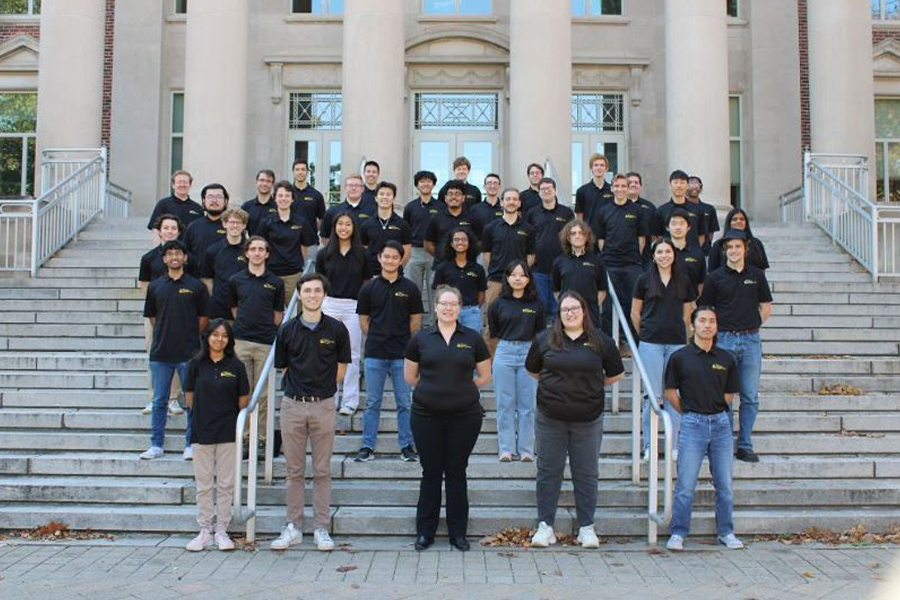Inside Purdue Lunabotics: Building Autonomous Robots for Lunar Construction

Purdue Lunabotics is a student organization that gives its members the opportunity to help design and build an autonomous robot to compete in the national Lunabotics Competition at NASA’s Kennedy Space Center in May. Purdue Lunabotics will be one of dozens of college teams from around the country that have designed and built remote-controlled mining robots capable of performing proposed construction operations on a simulated Lunar regolith surface.
Lunabotics president Nathan Stonitsch, a senior in Mechanical Engineering, says the team's approach is multifaceted, divided into mechanical, software, and electrical subgroups. He says throughout the academic year, these subgroups collaborate to design and build a new robot from scratch. He says as the competition approaches, the team faces numerous challenges, with one of the most significant being the harsh lunar environment they aim to simulate.
“To address this the best we can, Lunabotics has constructed a shed equipped with crushed salt, mimicking the lunar surface's properties,” says Stonitsch. “We also managed to acquire the exact lunar regolith simulant used in the competition, which will allow for more precise testing and evaluation.”
Stonitsch says central to the organization's success is its collaborative decision-making process. Technical leads oversee engineering decisions, with the chief engineer overseeing mechanical, software, and electrical aspects. This hierarchical structure ensures cohesion and effective problem-solving throughout the project lifecycle.
Anthony Butera, a senior in Purdue’s Elmore Family School of Electrical and Computer Engineering, is a team lead. He says he joined Lunabotics because of his interest in the space industry.
“The club was able to give me hands-on experiences I couldn't necessarily get in the classroom,” says Butera. “My favorite part of being a member is seeing the robot go from conception to reality as the year progresses.”
The task for this year’s NASA competition is to gather data on Lunar construction by designing and building a robot that will traverse the chaotic Lunar terrain and construct a regolith-based berm. Stonitsch says robots must be able to autonomously detect and navigate around obstacles like boulders and craters. Teams must consider several design and operation factors such as high robot dust tolerance and minimizing dust projection, efficient communications, minimizing vehicle mass, minimizing energy/power required, and maximizing autonomy.
Purdue Lunabotics has achieved notable success in past competitions, with two second-place finishes and a third-place finish in autonomy. Stonitsch attributes their accomplishments not only to technical prowess but also to the valuable skills and experiences gained through participation. Beyond technical skills, students benefit from networking opportunities and potential career connections in the space industry.
Evanjaline Sahaya is a sophomore majoring in electrical engineering. She says her favorite part about Lunabotics is the people.
“Throughout the design and manufacturing process, everyone works together and helps each other grow and become better engineers, all while having fun at the same time,” says Sahaya. “Some of my best memories from college come from Lunabotics meetings, and I'm so grateful for that.”
Purdue Lunabotics also supports a VIP class consisting of approximately 30 first-year engineering students. Their primary focus revolves around helping design and build the team’s autonomous robot and doing research projects to help the team in the future.
Looking ahead, Purdue Lunabotics remains committed to pushing boundaries in lunar robotics. With each competition serving as an opportunity for innovation and learning, the organization continues to inspire future engineers and contribute to humanity's exploration of space.
